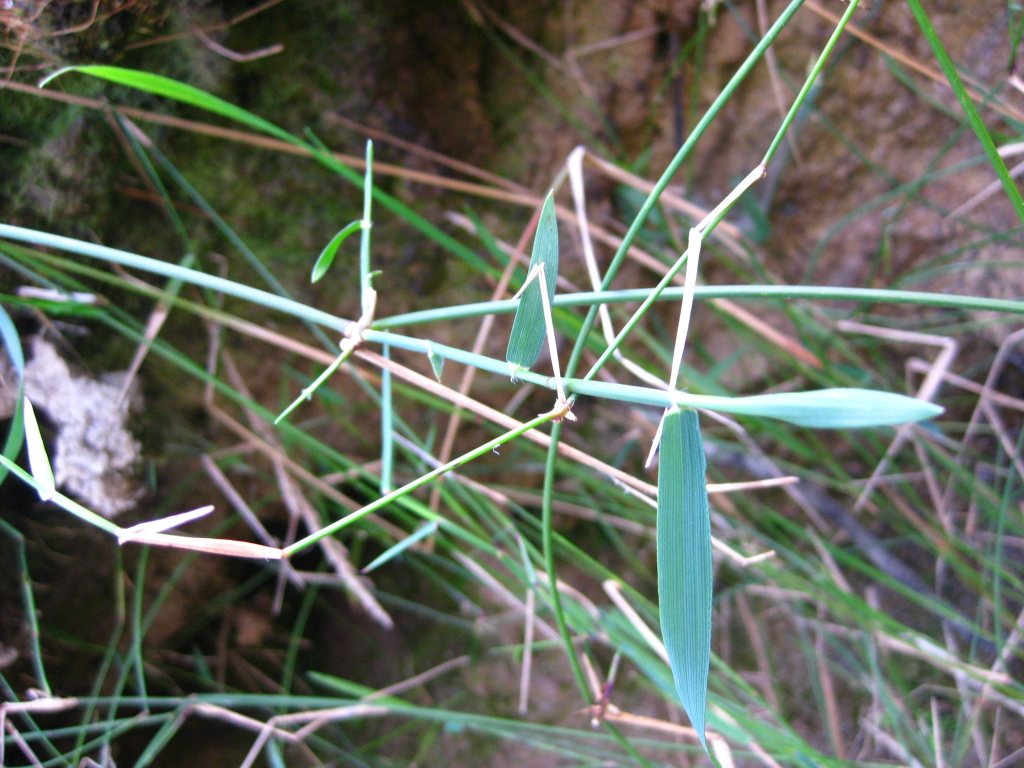Tetrarrhena juncea
R.Br. Forest Wire-grassRhizomatous perennial, long-trailing or climbing to 8 m high. Stems wiry, retrorsely scabrous, usually much-branched, often producing adventitious roots from lower nodes. Leaves spreading, distant or lacking from lower stems, retrorsely scabrous, glabrous or shortly hairy about the ligule; blade flat or nearly so, 1–8 cm long, 2–5 mm wide; ligule ciliate, to 0.3 mm long, sometimes with marginal hair-tufts to 3 mm long. Inflorescence a spike-like raceme 2–7 cm long. Spikelets 5–16 per raceme, 4.5–6.5 mm long, often purplish, subsessile or with pedicels to 3 mm long; glumes subequal, 1.6–3.5 mm long, smooth and glabrous; lemmas glabrous, obscurely 5–7-nerved, lower sterile lemma about two-thirds length of spikelet, obtuse, hardly keeled, upper sterile lemma and fertile lemma similar, obtuse, keeled; palea slightly shorter than fertile lemma, often purplish; stamens 4. Flowers Nov.–Apr.
Wim, VVP, GipP, OtP, WaP, Gold, CVU, GGr, NIS, EGL, EGU, WPro, HSF, HNF, OtR, Strz, MonT, HFE, VAlp. Most commonly occurring in wet forests but also found in gully vegetation, heaths and woodlands. Often particularly abundant in disturbed areas, e.g. following fire or clearing.
Tetrarrhena juncea var. scabra Benth. appears to be a superfluous synonym, the specimen on which this name is based not being sufficiently distinctive to warrant formal recognition.
Walsh, N.G. (1994). Poaceae. In: Walsh, N.G.; Entwisle, T.J., Flora of Victoria Vol. 2, Ferns and Allied Plants, Conifers and Monocotyledons, pp. 356–627. Inkata Press, Melbourne.
 Spinning
Spinning


